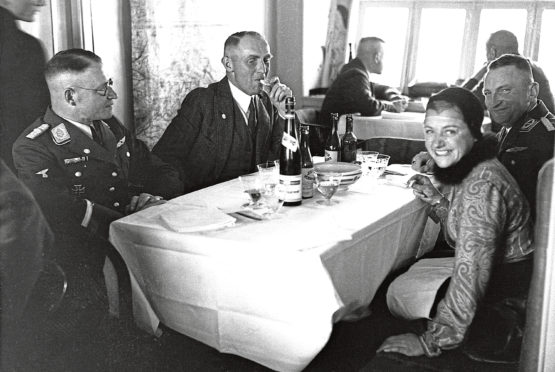
Writer Alex Johnson and actor pal Vincent Franklin – Mike Travis in TV’s Bodyguard – love lists and food.
They marry their two obsessions in their first joint book.
Here, Alex tells Sally McDonald the Honest Truth about the city that ate its zoo, and the Titanic’s menu quirks
What inspired you to write this book?
A couple of years ago I wrote A Book Of Book Lists, which featured all kinds of lists – such as what books IKEA uses as display props and what was on Bin Laden’s bookshelf. After Vince, an old friend and neighbour, read it, he suggested we do something similar about interesting menus and the stories behind the dishes.
Also, we both really like food – we play snooker together every Wednesday night and the discussions in the pub afterwards often end up with debates about how to pronounce “chorizo” or the best recipe for mincemeat.
How much research was involved?
Thank goodness for the internet. This book would have taken a decade of around-the-world travel to research without it. Apart from a couple of trips to the British Library, the research rarely took us further than the kitchen, but it did take a year to gather all the stuff together.
What was your most surprising discovery?
For Vince it was the Shah of Iran’s celebration of 2,500 years of the Persian Empire, where the feast cost around £200,000 per person. I’d never realised that when the Prussians were besieging Paris in 1870, the people in the city were so hungry they ate the zoo’s animals. We included a menu from a restaurant for Christmas Day that year which featured unusual dishes such as elephant soup. They didn’t eat everything though, partly because nobody really knew how to cook a hippo.
What did you discover about the Hindenburg’s menu?
We were interested in food served on ships, planes and space rockets. The Hindenburg was both luxurious and constrained by weight. We thought that would be the main story – after all, they had an aluminium piano made just to reduce the payload by a few pounds.
But once we got into it, there was another story in there too.
In this case, it was all about what a powerful propaganda tool the Hindenburg was for the Nazis and how there’s evidence of that in the food they served to the millionaires on board.
What can you tell us about the meals on board the Titanic?
If you want a snapshot of the class structure of Edwardian Britain, look no further than the menus from the Titanic. You don’t even need to look at the food, the menus tell you everything – black and white or colour, lunch or dinner in the middle of the day, instructions on how to complain for those who may not know how to behave in a restaurant.
What insights can you offer on Charles Dickens’ 1868 dinner at Delmonico’s in New York?
Dickens had been to America 25 years before and hated the food, which he described as “indigestible matter”.
He was back again in 1868 but this time loved the food he was served at a special dinner at the famous Delmonico’s restaurant – largely because of its new chef, who was instrumental in popularising avocados in the city.
Only male journalists were invited.
Female journalists found this unacceptable and their response sparked a social revolution in eating habits and in the women’s rights movement.
Until then, women could only eat at restaurants in the US if they were accompanied by a man.
What would you like readers to take from the book?
That food is not just fuel. One of the most interesting segments of the early series of The Great British Bake Off was when Mel and Sue looked into the history of the dishes the contestants were making. We hope this book provides some intriguing insights into famous events, plus amazing facts to entertain your friends.
Menus That Made History: Over 2,000 Years Of Menus From Ancient Egyptian Food For The Afterlife To Elvis Presley’s Wedding Breakfast is out now in hard back, Kyle Books, £14.99

Enjoy the convenience of having The Sunday Post delivered as a digital ePaper straight to your smartphone, tablet or computer.
Subscribe for only £5.49 a month and enjoy all the benefits of the printed paper as a digital replica.
Subscribe